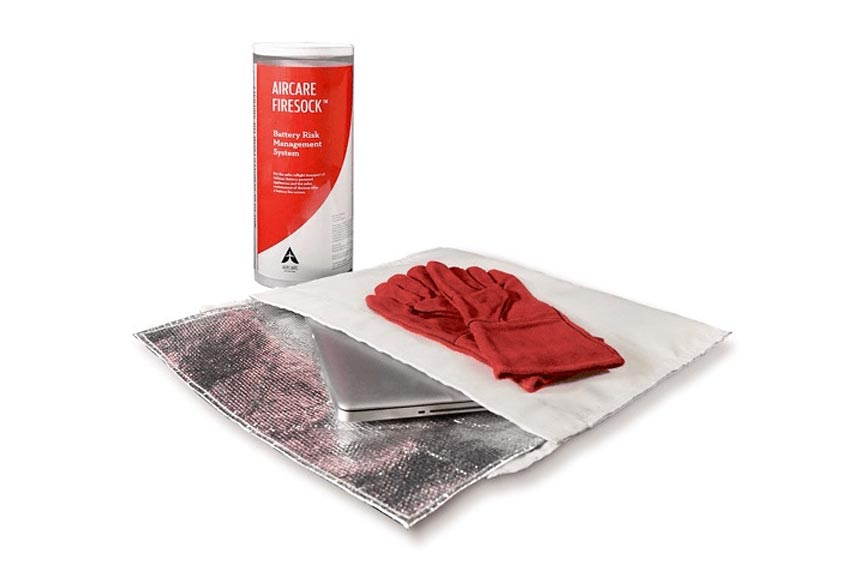ACE 2026 - The home of global charter.
 The bimonthly news publication for aviation professionals.
The bimonthly news publication for aviation professionals.

Aircare International has introduced its next generation Aircare FireSock designed for lithium ion battery fire containment in aviation and maritime travel.
Lithium ion battery operated devices such as smartphones, laptops, tablets and cameras can pose a threat onboard an aircraft if damaged or catching fire. When a corrupt battery cell becomes compromised in a lithium ion battery powered device, it can set off a series of chain reactions scientifically referred to as ‘thermal runaway’. This condition produces extreme temperatures and pressure causing the device to vent fumes, smoke, catch fire and explode, throwing shrapnel throughout the aircraft.
The FireSock provides an opportunity for safer containment and transport of suspect devices inline with FAA recommendations and SAFO. Containing a potentially dangerous device before and after a battery incident allows the crew to focus on other important tasks such maintaining flight operations, containing smoke conditions, or preparing the aircraft and passengers for an emergency evacuation. The rapid deployment of the Aircare FireSock delivers a benefit when dealing with a suspect device.
The FAA-recommended procedure to extinguish a lithium ion battery in full thermal runaway is to knock down the flames with Halon then cool the cells by dousing the suspect device with water or an aqueous-based fire suppressant such as FireBane. The Aircare FireSock was designed to work in conjunction with FAA procedures and training. It is not a substitute for the FAA guidance. However, the FireSock represents superior risk mitigation against a suspect device, one that is getting hot but has not yet gone into thermal runaway. The FireSock contains the explosion and projected matter that commonly accompanies a lithium ion battery pack in thermal runaway.
With the next generation Aircare FireSock there is dramatic decrease in the exterior containment bag temperature and heat tolerances due to advances in insulation materials. The original form factor of the device remains the same, and comes packaged in a compact, lightweight tube for easy storage and onboard access. By design, the new insulation layer carries a temperature protection rating of 2000°F. The FireSock is designed to completely enclose any device (ranging from smartphone to large gaming laptop) placed inside, while a double-sealed velcro tab system locks the FireSock firmly shut to contain a suspect device and prevent the onset of thermal runaway. Externally, a handle and gloves are provided so the FireSock can be safely moved to a secure location after use.